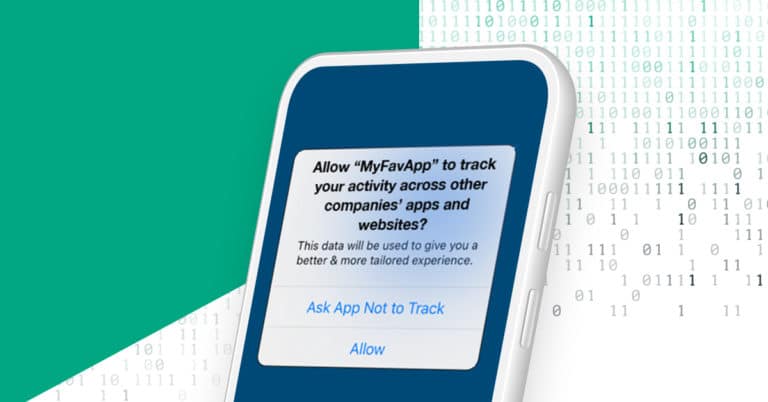Update as of Tuesday, October 25th, 2022:
Apple released iOS 16.1 (and SKAN 4.0) this week – check out our SKAN 4.0 and What Happens Now blog posts that recap everything you need to know (so you don’t have to pore through the release notes yourself).
When Apple introduced the App Tracking Transparency (ATT) policy at their Worldwide Developers Conference (WWDC) in June 2020, it turned the iOS ecosystem on its head and triggered what many leading mobile influencers came to describe as the “IDFA Apocalypse.” That’s because the iOS device-level identifier known as the ID For Advertisers (IDFA) would be zeroed out by default unless users gave consent via the ATT framework.
And not only that. Without ATT consent, Apple would prohibit all other forms of “tracking” (meaning device-level ad attribution), even if the IDFA were not used.
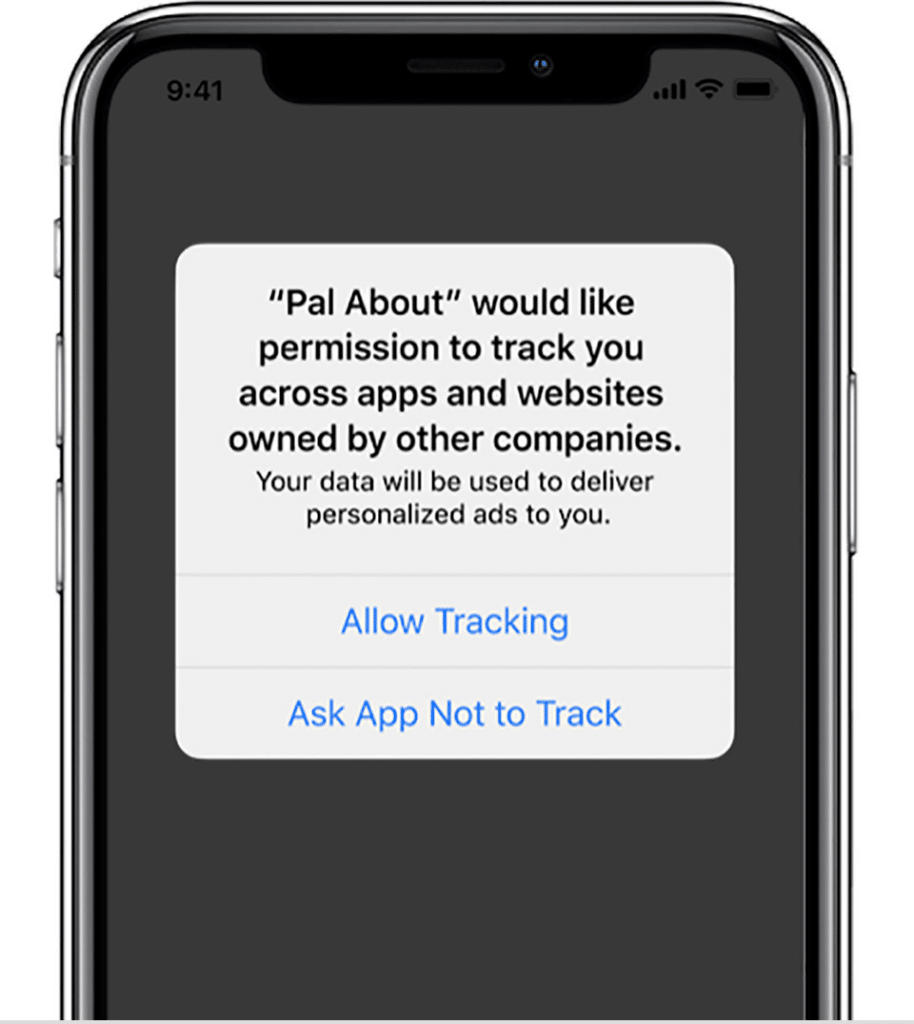
Apple ended up delaying the implementation of ATT until early 2021. But once the new framework went into effect, the ATT prompt — now a common sight for iOS users — arrived with a bang. And it’s here to stay. This means app developers and marketers now have over 12 months of data to determine the best tactics for achieving a high ATT opt-in rate. Some are even beginning to ask if they should just remove the ATT prompt altogether.
In this blog we’ll recap the ATT story so far, discuss whether ATT consent is still valuable, and explore what happens when an app removes the ATT prompt.
Spoiler alert: There is no magic compromise that allows device-level ad attribution without showing the ATT prompt. But we think pursuing ATT opt-ins is still worth it for most apps because this provides a valuable “truth set” (or baseline estimate) of granular data. This data can then be used to extrapolate insights from the entire universe of user activity, including from users who do not opt in.
A brief history of the ATT prompt
The ATT permissions prompt is similar to other user permissions on iOS, such as the prompt to allow push notifications. The ATT prompt asks users if they want to allow an app to track them across other companies’ apps and websites. The trouble is, within a given app, only part of the message is configurable by the app’s developer. This limits the opportunity for optimization that could lead to higher consent rates. In addition, this prompt can only be triggered once, so if the user opts out, it’s extremely difficult to reverse this decision.
To help advertisers deal with the chasm caused by ATT, Apple introduced SKAdNetwork. It’s an aggregate-level ad attribution system that provides data from both opted-in and opted-out users that the market has reacted to skeptically.
Taken together, these changes introduced a new world of aggregated data for ad attribution. However, this data is far more limited than the granular attribution information advertisers have been accustomed to.
How “pre-prompts” can increase the chance of user opt-in
A “pre-prompt” is usually shown to app users immediately before an OS-level permissions prompt. This screen is used to provide further context on the implications of the requested permission. It’s also used to explain to users why they should opt in.
In the case of ATT, pre-prompts are one popular tool to improve opt-in rates. They provide an opportunity for apps to build trust, educate users, and add a unique brand voice. For more best practices around ATT pre-prompts, check out this blog post.
Apple has a number of requirements and nuances around pre-prompts, including:
- Pre-prompts must contain only one clear CTA like “Read More,” “I understand,” or “Continue.”
- The CTA must directly open the system alert. This is to prevent developers from building workarounds that could result in the user being asked for consent multiple times.
- Apps cannot offer any incentives or compensation in return for ATT consent.
The good news is that ATT opt-in rates can improve as much as 24% if you use pre-prompts correctly.
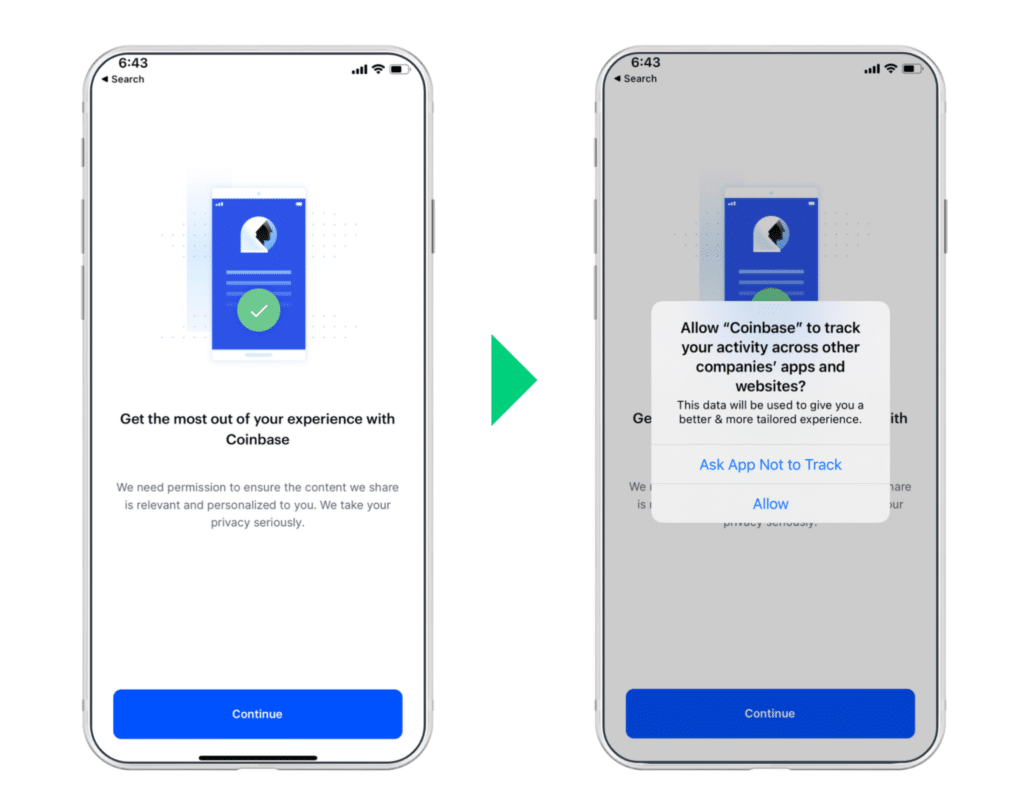
So what are apps making of this new reality?
There are multiple definitions of “ATT opt-in rate” in the ecosystem, but they all show the same general trend. In May 2021, ATT opt-in rates started off low and gradually grew as iOS 14.6 adoption rolled out more broadly:
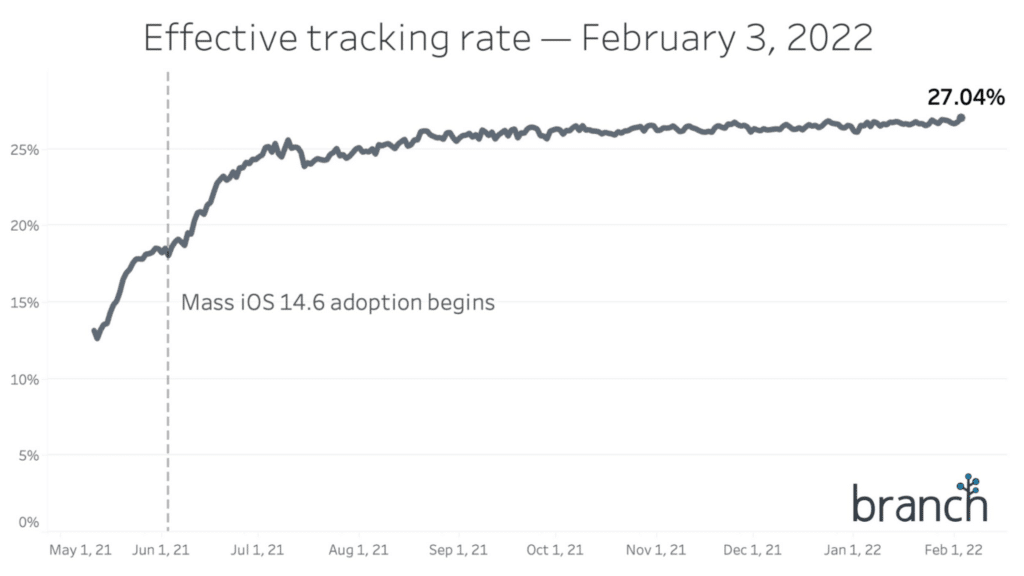
However, opt-in rates have remained surprisingly stable ever since iOS 14.6 reached full adoption. This indicates user behavior is not changing much over time. And it’s important to keep in mind that these opt-in rates don’t tell the whole story, because ATT is a dual-sided consent mechanism. This means that, in order to actually use that IDFA for attribution, both the publisher and advertiser apps must gain consent separately.
Considering the tradeoffs at hand — and the somewhat jarring user experience that comes with the ATT consent screen — some apps have begun questioning whether it’s actually worth getting the permission to track at all. A logical next question then becomes: Would an app still have access to the IDFAs of users who had opted-in before the ATT modal was removed?
What happens to IDFAs of opted-in-users when the ATT modal is removed?
The short answer: Apps don’t lose opted-in users’ IDFAs immediately if the ATT consent prompt is removed.
The long answer: As usual, it’s a lot more complicated.
Technically speaking, a user’s tracking preference and access to their IDFA remain for as long as the app is installed (assuming the user doesn’t dive into the iOS Settings app to manually revoke permission). This is true even if the code for the ATT consent modal is no longer in the app.
This means that, at least in the beginning, the app must include the ATT modal to get tracking consent. However, because the tracking preference and IDFA access remain even if the ATT modal is later removed, this also means the user’s consent status is technically separated from the consent modal implementation. This then begs the question: Is there some technicality developers can use that would allow for user-level ad attribution without the need for the ATT modal?
Unfortunately, there is not.
This is because, along with the ATT prompt, Apple also introduced the concept of Privacy Nutrition Labels. These serve as a policy-driven way to police apps post-iOS 14.
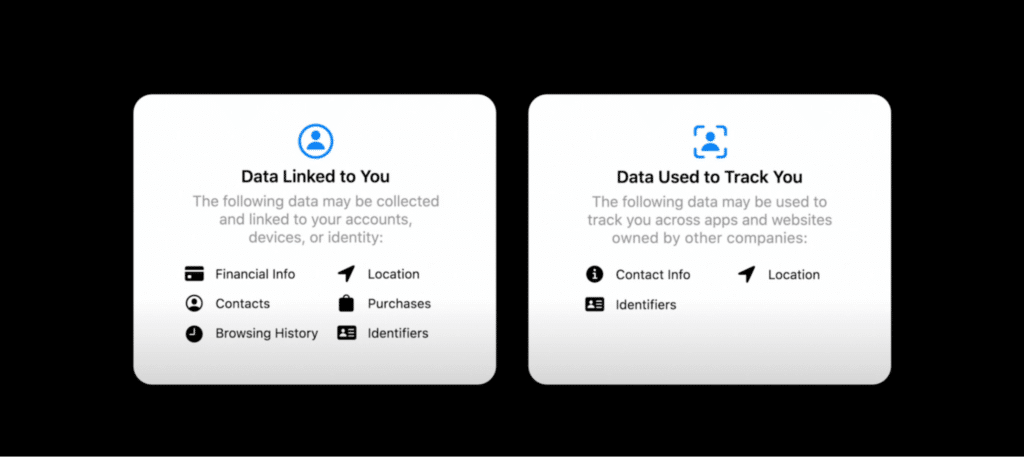
Apple’s Privacy Nutrition Labels tell users exactly what data an app is accessing and what it’s used for. This information is collected via a questionnaire that developers are required to fill out, and Apple’s App Review team regularly checks to ensure that what developers report for their Privacy Nutrition Labels matches their ATT consent dialog implementation. If it doesn’t match, the app is rejected from the App Store.
In other words, yes, while an app will still technically have tracking permission and access to some existing users’ IDFAs even if the ATT modal is removed — at least for a little while — it will not help with device-level attribution for any new installs. This is because once the app indicates via its label that data is used to “track” for ad attribution (even if that data is not IDFAs), Apple will detect this mismatch and likely reject the app. The only Apple-sanctioned way to attribute ad-driven installs on iOS without ATT consent is via SKAdNetwork.
Is the ATT prompt still worth it?
We think so, for most apps. Even though average opt-in rates are low, there is still a lot to be gleaned from even a small dataset. With appropriate use of modeling and projections, even a limited amount of opted-in data gives advertisers the opportunity to paint a rich and deep portrait of their customer’s journey and behavior. It also gives advertisers the ability to weave an informative narrative on the customer’s potential lifetime value (LTV).
Build trust in your brand with Branch
With Branch, you can rest easy knowing that your ad operations comply with platform privacy policies out-of-the-box. That’s because Branch automatically enables SafeTrack™ for all Universal Ads links created to measure ad campaigns, which disables user-level ad attribution (including via probabilistic techniques) on iOS until users give consent via the ATT prompt.
Getting users to give ATT consent ensures mobile measurement partners (MMP) like Branch can support your measurement and optimization needs on iOS campaigns while maintaining full compliance with ATT policy. With iOS 16 coming later this year, we recommend using this time to update, iterate, and optimize your ATT strategy to instill user trust and increase your opt-in rates. If you haven’t implemented the ATT prompt yet and are exploring options for your app, review our docs for implementation details. If you’re ready to get up and running with our ad attribution solution, Universal Ads, reach out to your Branch Customer Success Manager, or contact sales today.
Branch provides the industry’s leading mobile linking and measurement platforms, offering solutions that unify user experience and attribution across devices and channels. Branch has been selected by over 100,000 apps since 2014 including Adobe, BuzzFeed, Yelp, and many more, improving experiences for more than 3 billion monthly users across the globe. Learn more about Branch or contact sales today.






















